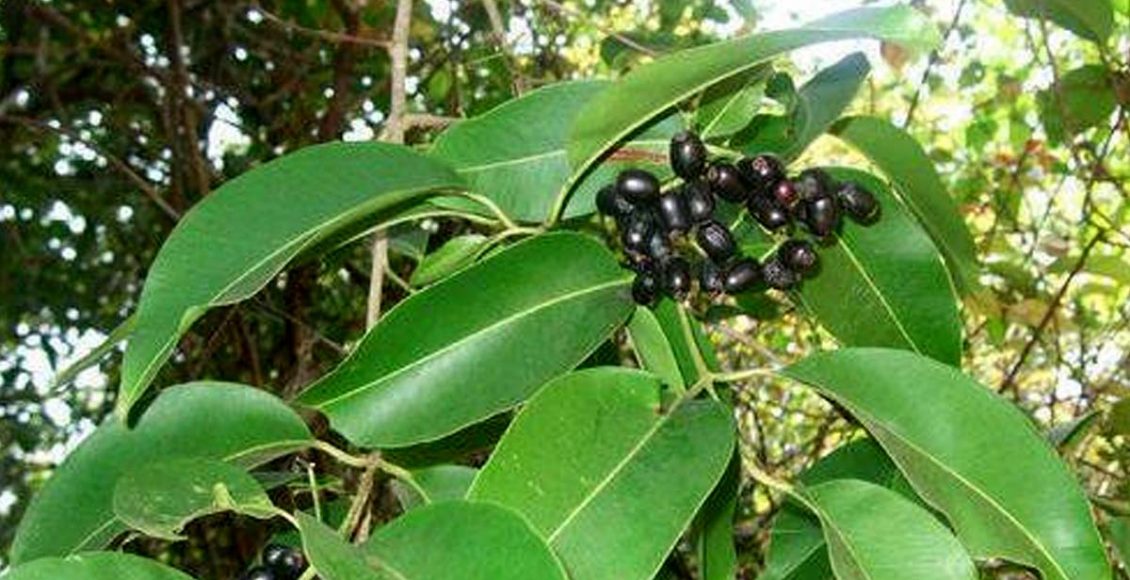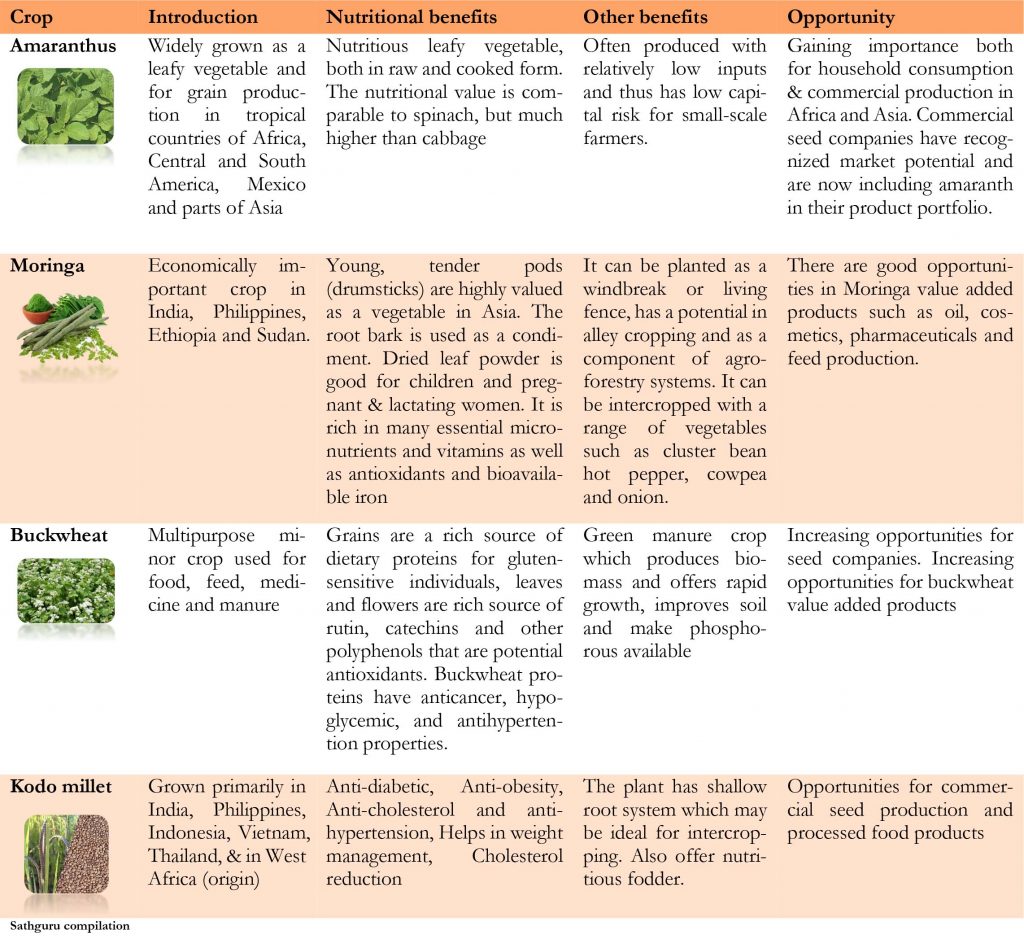
Underutilized crops for improving nutritional security
Wheat, rice and maize are the three major cereal crops cultivated in the world. The top 10 largest international seed companies which controls twothirds of the global and Indian seed market, primarily focus on major staple crops i.e. rice and maize leaving wheat because it is a self-pollinating crop making it less attractive for breeders. Dependence on handful of major crops is leading to agronomic, ecological, nutritional and economic risks which is probably unsustainable in the long run. Global climate change further adds to the unsustainability which have a major impact causing biotic and abiotic stresses in agricultural production and threatens crop yields. Inclusion of underutilized/minor crops in current cropping system provides opportunities to build spatial and temporal heterogeneity thereby enhancing resilience to biotic and abiotic stresses. Underutilized/ minor crops are usually grouped into categories based on their end use such as beverages, cereals, oils, spices and flavouring, fruits and vegetables etc. However, majority of underutilized crops have multiple use. These crops constitute an important part of the local diet of communities by providing valuable nutritional components, which often lack in staple crops.
Majority of underutilized crops are indigenous species, which means that much of the produce is collected from the wild. The cultivation of these species and the development of their quality characteristics through plant breeding can encourage their acceptance for commercial purpose. Significant research, breeding and development efforts are needed for a range of promising crops to convert existing local landraces into competitive varieties with wide adaptation and promising commercial potential. Green Revolution have replaced many of these traditional crop species by high-yielding staple crops developed through modern breeding programs.
Currently underutilized food sources ranging from minor grains and pulses, root and tuber crops and fruits and vegetables to non-timber forest products. Most of these minor crops are hardy in nature which can be grown with minimal external inputs. For example, in the southern part of Rajasthan where harsh climatic conditions exists only robust, drought-tolerant traditional vegetables with short growth cycles such as kachri can survive and produce food.
Underutilized minor fruits can also help bridge the gap of nutrition as they are very rich in nutrients and also they can grow in adverse conditions on all kinds of soil. This strength of minor fruits is particularly useful in a country like India, where majority of the farmers are resource-poor and carry out farming under not so Underutilized minor fruits can also help bridge the gap of nutrition as they are very rich in nutrients and also they can grow in adverse conditions on all kinds of soil. This strength of minor fruits is particularly useful in a country like India, where majority of the farmers are resource-poor and carry out farming under not so essential vitamins, minerals and antioxidants.
There are some other underutilized/ minor crops such as Finger millet, Winged bean, Syrian rhubarb, Seabuckthorn, Rice bean, Foxtail millet, Faba bean, Rose apple and Qui, etc.
These crops have the potential to make a substantial contribution to food and nutrition security, to protect against internal and external market disruptions and climate uncertainties, and lead to better ecosystem functions and services, thus enhancing sustainability.
Author

Connect with Author at: E-mail agribusiness@sathguru.com
 Grow Beyond
Grow Beyond 


